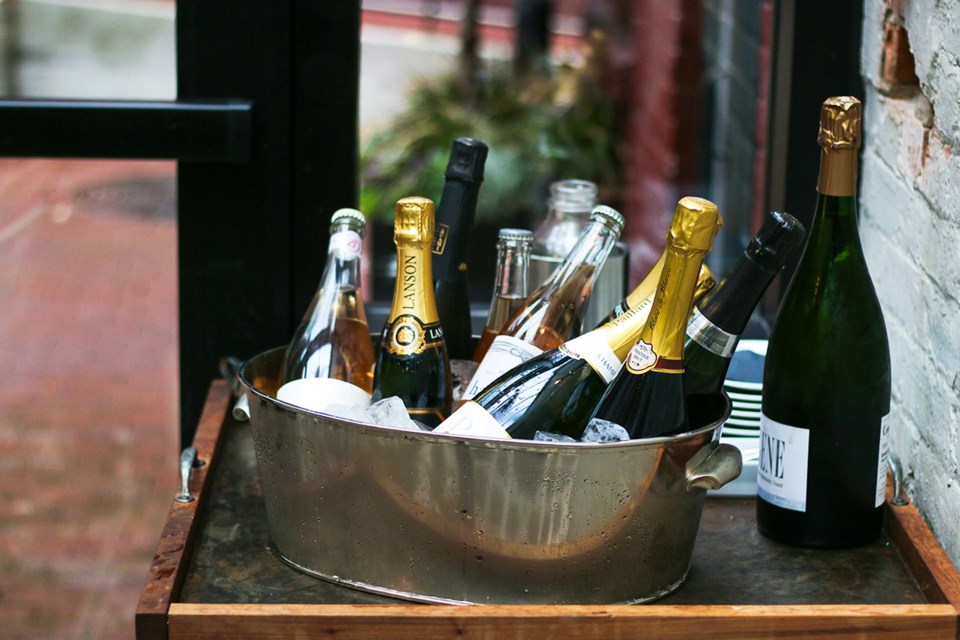If you are noticing fewer bottles of imported wine on restaurant wine lists or private wine store shelves lately, Vancouver sommeliers, merchants and agents want you to know it’s not for lack of trying.
A social media storm kicked up Monday when there were unconfirmed reports that the B.C. Liquor Distribution Branch would not be delivering “spec” wines during the busy Christmas season.
These are special-order wines from anywhere outside B.C. and not available at B.C. Liquor Stores.
On Tuesday morning, the LDB issued a statement that it will “continue to take orders and ship all products (stocked and spec) for our wholesale customers throughout the month of December.”
The press release also says that, to handle holiday demand, it has increased its distribution centre operations to six days a week, 24 hours a day.
Although this might alleviate some of the anxieties about Christmas orders, the wine professionals contacted by the Courier say there are existing problems that are challenging enough on their own.
“When we are short-ordered, our by-the-glass program has come under jeopardy,” says Shiva Reddy, sommelier and service manager at Boulevard Kitchen & Oyster Bar at the Sutton Hotel.
The restaurant has 800 wines on its list, 75 per cent of which are spec wines. It’s this ability to curate the wine list that helps set restaurants apart, Reddy says.
However, half of the wines on her by-the-glass list are not available. She knows the wines have arrived in Vancouver; there’s just no way to get them until the LDB delivers them.
If the wines were from B.C., however, the wine maker or wine merchant would be able to deliver them directly.

“We are trying to build a wine culture [in Vancouver],” says Lisa Haley, the restaurant director at L’Abattoir who also stresses the importance of being able to create a distinctive wine list. “If you come into my restaurant and I have blank spaces on my list, it will affect how we are perceived.”
She says that it used to take 10 to 14 days for a wine order to show up at her Gastown restaurant. Now it’s usually 21 to 31 days.
While restaurants like hers have the cash flow to allow it to stock up on wine orders, smaller and newer restaurants often don’t have that flexibility, she says. As well, for everyone, space is at a premium. “We need our square footage dedicated to producing revenue. Restaurants that can maintain large cellars are few and far between.”
In B.C. all wines from other provinces and countries must first be delivered to a third-party bonded warehouse. After paperwork with the LDB goes back and forth, the LDB picks up the wine and delivers it to its own warehouse. There’s more internal paperwork before it delivers the orders.
This system can take four to six months, says Robert Simpson, general manager of Liberty Wine Merchants, which has six stores throughout the Lower Mainland.
Independent wine stores, like restaurants, rely on being able to sell wines that aren’t available at government-owned stores. Ninety-eight per cent of his wines are spec orders.
“We rely on these for the livelihood of our business,” he says. “They are the unique and different wines you can’t buy anywhere else. We’ve seen these orders just not show up and it’s gotten worse.”
He says part of the problem is LDB’s new computer program, which is causing headaches for everyone; another contributing factor is that other businesses, such as barber shops, are now able to serve customers alcohol, adding demand to a distribution system already under pressure.
But it goes deeper than that, he says.
Simpson says the distribution system favours government stores, both in terms of protecting the products it sells and giving delivery priority to the government stores.
“The crazy thing is that if I was in the same business in Seattle, I can go to a trade tasting today, taste a wine from France and it would be in my store by Christmas — four to six weeks. In our situation, if I walk into a tasting room today, I’d be at best getting it between February and the end of April — four to six months is realistic.”
This matters more when tasting, for instance, a rosé to decide whether to add it to your list. Industry tastings are available in mid-February, but the orders would not arrive until after the summer season when rosé sales are at their peak.
He wonders why the two-warehouse system is necessary. In Washington State, the order goes directly to the government warehouse.
“It’s incredibly frustrating,” he says. “I’ve been doing this for 40 years — we just have a level of hurt that we accept.”
Jessica Luongo and Marisa Varas founded the AmoVino wine agency in 2015 and she’s finding the LDB distribution system increasingly frustrating, especially since the LDB updated its computer system.
“It’s like trying to open your Facebook app with your Motorola flip phone,” she says.
When she orders a wine for a client, she’s given an order number. When the wine arrives at the warehouse, it’s given a different order number so while she knows it’s arrived, she has no way of tracking it.
“We’ve done our job by getting people interested in our product and putting it on their list but it’s getting harder to get those products delivered,” she says. “I don’t know of any other industry this happens to.”
If she was selling B.C. wines, and had a case in her car, she’d be allowed to deliver it directly to her client, enhancing customer service. As a wine importer, her hands are tied. One of her customers searched the LDB website to track a wine she knew was in the warehouse; the customer was told there was no inventory for it in the province.
L’Abattoir’s Lisa Haley says the situation must be tough on wine agents. “I don’t pay until I get the product and the agents don’t get paid until I pay,” she says. “This must be grinding their sales to a half.”
In response to the Courier's questions, the LDB says, “as with many large-scale technical updates, the LDB encountered a few unexpected scenarios and is working hard to resolve them.
“Initially, there was a technical delay in the ability to process orders. This issue has now been resolved. The LDB is working hard to catch up on a small number of outbound orders but, for the most part, it’s back to business as normal.”
The average wait for spec orders is seven to 14 days, the statement says.
The LDB also says its “current Vancouver distribution centre is facing capacity pressures due to its limited size, but a relocation to its new site in Delta in 2018 will increase capacity and improve service levels.”



